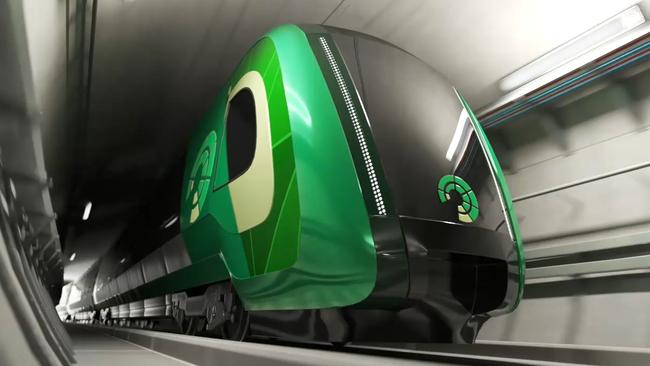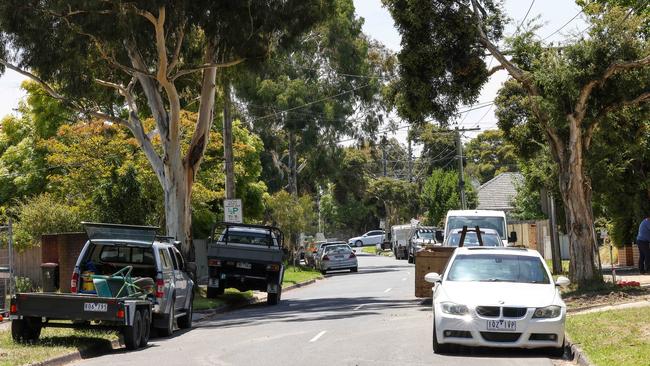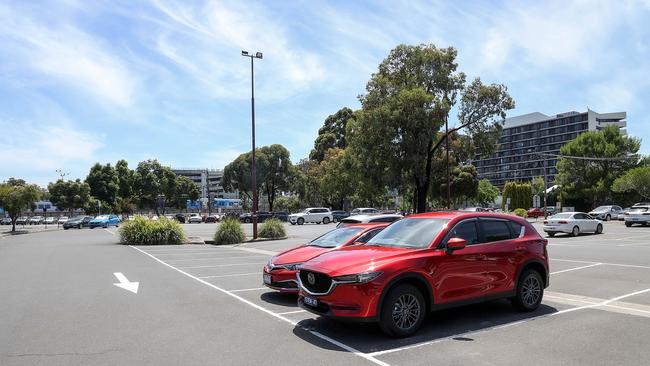Suburban Rail Loop impacts: Traffic jams, less parking, noise, vibrations
Thousands of residents, businesses and motorists face years of noise, vibrations and chaos with construction of the Suburban Rail Loop. Check out the possible impact on your area.
Victoria
Don't miss out on the headlines from Victoria. Followed categories will be added to My News.
Thousands of residents, businesses and motorists around eight key precincts being built as part of the $34.5 billion Suburban Rail Loop face years of construction chaos.
Detailed information on the incredible scope of the mega-transport project, which will reshape middle Melbourne and generate thousands of jobs and new homes, has been released.
The 33,000 pages of environmental and planning documents, which usher in a month-long community consultation process, show 108 of about 150 homes bulldozed for the project’s first stage are expected to be in Box Hill.
But the wide impact of the construction will see neighbouring streets around new precincts shut, hundreds of car parks and retail opportunities lost, and noise and vibration affecting dozens of surrounding homes for several years.
Tunnelling for the first stage of the SRL, which will run from Cheltenham to Box Hill, will begin before the middle of this decade and trains are expected to run on the 26km line from 2035.

During that time, millions of cubic metres of soil and slurry will be excavated and dumped.
Documents note the risk of “odour” from contaminated soil being dug up at Cheltenham, where the former Highett gasworks operated.
Large swathes of parkland will be lost forever at that site — called Sir William Fry Reserve — which is across the road from Southland Shopping Centre and in an area preparing for an influx of new developments over the next decade.
There will be more than 1400 trees chopped to make way for the project, including at the six new station sites, a stabling yard for trains at Heatherton, and at an emergency access point and ventilation system built at Mt Waverley.
Planning documents say the direct impact will be “moderate” in most places, due to most works being largely underground.
But there will be upheaval for local communities including traffic snarls, loss of amenity, and chaos for retailers.
“Acquisition of 152 residential properties across the project would potentially create stress and anxiety for affected households,” the documents say.
They point to cultural impacts in Box Hill where there is a strong Chinese community and the most businesses and homes will be lost, which could “detract from Box Hill’s sense of place as a hub for East Asian shops and restaurants”.
Construction of Clayton station, which will be built as a super-hub to enable connections to regional lines, would see a northbound lane on Clayton Rd closed for 18 months and a section of Carinish Rd permanently closed.
Congestion will worsen on Clayton Rd during peak periods and emergency services and Monash Health patients would be “adversely impacted”.
Monash University and nearby CSIRO have warned about the impact of the project on sensitive scientific equipment, which is also flagged by Deakin University in Burwood.

REAL COST OF SUBURBAN RAIL LOOP
Trains would run at least 20 hours a day on the Suburban Rail Loop and reach speeds of 100kmh, with the potential for services every two minutes.
But to build the $34.5 billion first stage of the mega-project, scheduled to open in 2035, residents and businesses close to station precincts face up to eight years of construction pain.
And more than 300 properties will be bought by the government or forced to move, including about 150 homes — most of which are in Melbourne’s east.
Planning and environmental documents released on Friday show the immense impact of the ambitious SRL plan, which would completely reshape middle Melbourne by building new transport precincts around suburban health, education and jobs hubs.
The first stage of the rapid transit system would be built between Cheltenham and Box Hill and enable 24-hour trains during two days a week.
The remaining five days of the week would include four-hour maintenance windows at night, meaning trains run for 20 hours a day.
Passengers would travel underground for almost the entire 26km journey between Cheltenham and Box Hill, which could be done in just 22 minutes, only emerging at the surface near to a stabling facility at Heatherton.
While early works are set to begin next year once planning and environmental approvals are obtained, major tunnelling would kick off in late-2024.
Tunnel boring machines would be of a similar standard to those that built the $13.7bn Metro Tunnel, and would excavate and install precast concrete segments in one process.
“Trains would operate as a turn-up-and-go service between Cheltenham and Box Hill, initially at six minute intervals during peak periods,” documents say.

“The design of the project’s operating systems and infrastructure enables a two-minute wait between services as demand increases.”
Tunnels would be 20-40 metres below the surface, with the deepest point up to 60 metres below ground under Riversdale Road in Burwood.
Stations would be 18-25 metres underground — much shallower than City Loop station platforms.
Suburban Rail Loop Minister Jacinta Allan said the opening of the EES process on Friday meant people could now have their say “on a project of unprecedented scale and significance for Victoria”.

“SRL East will not only transform our public transport system and deliver better access to jobs, education and health services, it will create great new and improved community spaces around each station and create thousands of local jobs.”
But opposition transport infrastructure spokeswoman Louise Staley said the government was not giving people enough time to wade through 33,000 pages of information released, with the EES process to wrap up by mid-December.
“They are riding roughshod over these communities as they have done all the way through this process,” she said.




